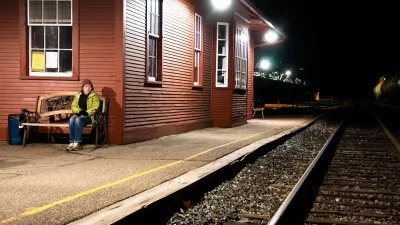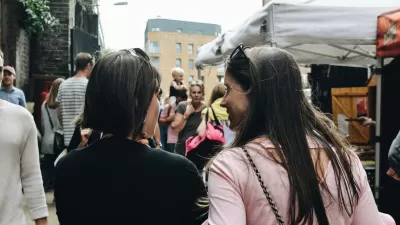Urban spaces and transportation system are largely designed and managed by men, but cities are starting to recognize the unique challenges women and children face.

In a piece in Forbes, Eva Epker argues that “cities that were designed for men’s needs and conveniences. They were not designed for women or even designed by women.”
In general, according to UN Women, almost 9 out of 10 women in cities around the world feel unsafe in public spaces – and, as Dolores Hayden argued in 1980, cities have been built, literally and figuratively, on the idea that men move into town and women stay home.
Pointing to the low number of women in the architecture and planning fields and local governments, Epker writes that “Due to this male dominance and subsequent male bias, women’s needs aren’t represented equally in either in city plans or realities: regardless of whether those women stay at home or work elsewhere.”
Epker uses examples from transportation — women are more likely to walk and have variable schedules to account for household tasks and childcare, among other things — to show how public transit and transportation infrastructure are often not geared to women’s and children’s needs.
Making cities safer and more accessible for women and children doesn’t always require massive change. In Stockholm, Sweden, where women were more likely to be injured on icy sidewalks, the city began prioritizing plowing sidewalks and cycle tracks to make conditions safer for pedestrians — “decreasing the number of accidents by 50% in the process without any extra charge to the municipality.”
FULL STORY: Cities Are Designed For Men’s Convenience - Not For Women’s Health

Planetizen Federal Action Tracker
A weekly monitor of how Trump’s orders and actions are impacting planners and planning in America.

San Francisco's School District Spent $105M To Build Affordable Housing for Teachers — And That's Just the Beginning
SFUSD joins a growing list of school districts using their land holdings to address housing affordability challenges faced by their own employees.

The Tiny, Adorable $7,000 Car Turning Japan Onto EVs
The single seat Mibot charges from a regular plug as quickly as an iPad, and is about half the price of an average EV.

As Trump Phases Out FEMA, Is It Time to Flee the Floodplains?
With less federal funding available for disaster relief efforts, the need to relocate at-risk communities is more urgent than ever.

With Protected Lanes, 460% More People Commute by Bike
For those needing more ammo, more data proving what we already knew is here.

In More Metros Than You’d Think, Suburbs are Now More Expensive Than the City
If you're moving to the burbs to save on square footage, data shows you should think again.
Urban Design for Planners 1: Software Tools
This six-course series explores essential urban design concepts using open source software and equips planners with the tools they need to participate fully in the urban design process.
Planning for Universal Design
Learn the tools for implementing Universal Design in planning regulations.
Smith Gee Studio
City of Charlotte
City of Camden Redevelopment Agency
City of Astoria
Transportation Research & Education Center (TREC) at Portland State University
US High Speed Rail Association
City of Camden Redevelopment Agency
Municipality of Princeton (NJ)





























